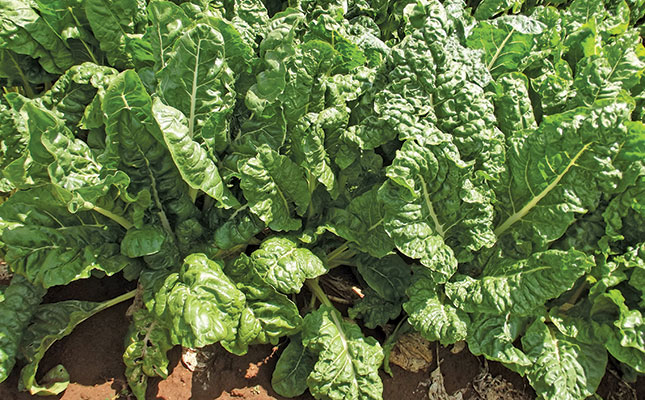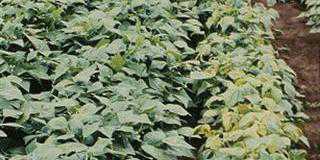
The most common cultivar is Fordhook Giant. Introduced in 1934, this bolt-resistant variety now comprises a number of variations.
Lucullus, another variety sold in this country, has a lighter green colour and a rather narrow stem that’s the same colour as the leaf. A company I once worked for chose the variety because of this latter characteristic – as both the stem and leaves could be used in the dehydration process.
Lucullus, however, is more susceptible to bolting than Fordhook Giant. Years ago, when I started farming, there was basically only one type of Fordhook Giant – a vigorous grower with large, crinkly, dark-green leaves and a wide, curved white petiole (stem).
Gradually, we began to find that some imports had a lighter leaf colour, fewer leaf indentations and a thinner stem, which started becoming more green than white. Nowadays, in some cases, the leaves are quite smooth and bear little resemblance to the original type.
While the new varieties were emerging, I visited a farmer who still grew the original strain. I remarked on this and he said he kept the source of the seed a secret. He was getting a higher yield and demand was greater, so his spinach was fetching a better price.
A short while later, when he went to buy seed from his ‘secret source’, he found that the company’s Fordhook Giant variety had changed. As we’ll see, you can’t blame the seed company for this.
Many still say the original variety, with its dark green leaves and contrasting white stem, was more attractive. But the pronounced leaf indentations tended to collect dust. This made cleaning them for market a bigger, more labour-intensive job.
Do it yourself
With all the variations currently available, there is scope to develop any number of different characteristics. If you’re a large producer, select a plant or two with characteristics ideal for your purposes, and transplant them before winter.
The plants will be ready to harvest in December. Repeat this process and, after about six years, you should have a new variety of your very own ‘design’.
A word of caution: from the second generation onward, choose plants that are slower to seed or you will unwittingly develop a strain susceptible to bolting. Remove early-bolting plants before flowering and only harvest seed from plants with the desired qualities that bolt late. Also, get to know exactly what the market wants.
If you cannot develop a strain better than those currently available, you would have gone to a lot of effort for nothing.
Lucky dip
Much of our Swiss chard seed is imported, and some companies ask producers overseas if they have surpluses that can be purchased at bargain prices. As each producer is likely to have his own variant of the variety, you may get different result when using a batch of ‘surplus’ seed from the same overseas company. (In some cases, a South African-produced seed lot will be imported back into the country!)
As each producer is likely to have his own variant of the variety, you may get different result when using a batch of ‘surplus’ seed from the same overseas company. (In some cases, a South African-produced seed lot will be imported back into the country!)
If you are a large Swiss chard producer, it’s wise to try selections from various companies, establishing from them where the seed originated. Recently, I planted the same variety from four different companies and all were different. The best had a yield nearly 40% higher than the worst, and there were also differences in plant height.
Recently, I planted the same variety from four different companies and all were different. The best had a yield nearly 40% higher than the worst, and there were also differences in plant height.












